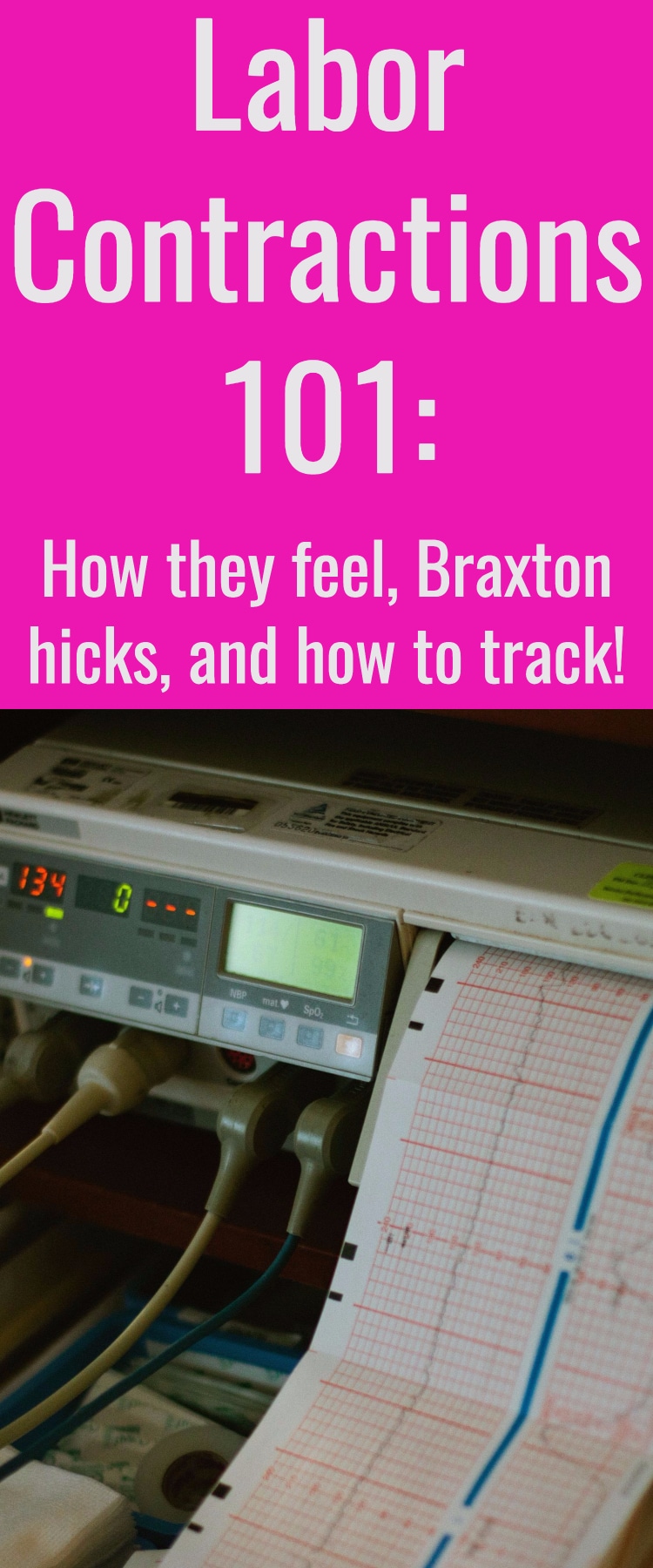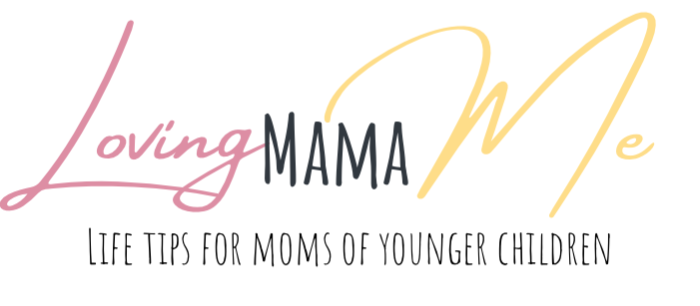Not sure what to expect when it comes to labor contractions? You aren’t alone! Here is a little guide to help you know when they are happening, if it’s the real down, and how to count contractions!
We had just turned on “27 Dresses” when I felt my first contraction.
I had been feeling a little off for a few hours previous, but I just figured it was just the plight of a 39 week pregnant woman.
However, after awhile, I noticed the discomfort I was feeling was coming at oddly regular intervals, and I started to think that maybe, just maybe, this was it.
For some reason, I decided to hide under the blanket and time my contractions on a mobile app that I had downloaded a few weeks prior.
Forrest just kept watching the show, having no clue what was going on! I just didn’t want to tell him that I might be in labor until I actually knew.
After about 30 minutes, the contractions were just a few minutes apart, so I finally told Forrest. I kept pressing the “contraction” button on my app
How do contractions feel?
This is one of those things that will vary from woman to woman. It also will depend on what stage of labor you are in, where/how your baby is situated, etc.
For me, the best way I could explain contractions when I was in active labor was having someone put a knife in my lower abdomen and twist it around and around. With Jack, I already had an epidural by the time I got to the intense contractions…but with Oliver, I was still at home, and I felt pretty much like I was going to die (my placenta was also starting to abrupt, which I have heard can cause more pain).
In general, there is pressure that gets stronger and more painful the further along in labor you go. They typically come at regular intervals.
I put together this post called “What Do Contractions Feel Like?” where I share the stories of lots of moms and how they describe labor contractions. Definitely check it out for more details!
What do contractions feel like in early labor?
Early labor typically feels like period cramps or like you have to have a bowel movement. You may actually think you have some kind of stomach flu (that’s how I felt for sure!). They typically don’t hurt too bad, but they can be uncomfortable and annoying.
Where do you feel contractions?
You can feel contractions in different areas of the abdomen and back, and it often depends on where the baby and placenta are situated.
For me, the contraction would always start in the center of my abdomen and then radiate out as it got worse until it finally peaked…and then it would kind of reel back in.
When I was just starting to go into labor with Oliver, I felt a ton of pressure on my pelvis. While I had been feeling increasing pressure in that area in the weeks leading up to it, I could hardly walk because the pressure was so much.
Many women experience back labor. Although I’ve never had this, I’ve heard it’s rather painful and uncomfortable! However, I think most women feel their contractions in the mid to lower abdomen.
What is a Braxton Hick Contraction?
It can be hard for some women to discern between Braxton Hick Contractions and real contractions – and it can be a bit scary. When I was 20 weeks pregnant, I started feeling contractions, and they turned out to be Braxton Hicks…but it was a bit frightening!
Braxton Hicks contractions can be described as a tightening in the abdomen that comes and goes. These contractions do not get closer together, do not increase with walking, do not increase in duration, and do not feel stronger over time as they do when you are in true labor.
I recommend using the BloomLife smart contraction monitor – it really can help you figure out how to discern between what’s real and whats not. I’ll talk more about that in a minute, but it truly does help you understand the process a bit more (get 10% off your weekly subscription using the promo code Clarks10).
How to Count Contractions
Contraction Tracker Options
This is an amazing device – it’s the first pregnancy wearable device of it’s kind.
Basically, it’s a device you can wear during pregnancy that continuously monitors activity in your uterus. It keeps track of contractions and helps you to know if you are actually having contractions.
While I can’t give a person BloomLife review, my sister-in-law used it and loved it. It helped her determine whether or not contractions were actually happened, and it saved her some major hospital bills. I assure you, if we have another baby, I will definitely be using it and giving my own personal review!
The Bloom contraction monitor is available for rental only – and I’ve arranged a special BloomLife promo code – just use the code Clarks10 for 10% off your weekly subscription.
The Old Fashioned Way
Use a stop watch, a piece of paper, and write it down. This is the simplest way to keep track of your contractions. You want to time them from the start of one contraction to the start of the next to determine how far apart they are.
Contraction Counter App
When I was pregnant with Jack, it was really at the beginning of the age of apps. There weren’t a lot of contraction apps available, and the one I downloaded is rather primitive by today’s standards.
However, I loved it! I loved that I could just press a button when the contraction started and ended, and it kept a record of how many contractions I’d had, the average length, and what the last one was.
I think that every pregnant mom (and the dad-to-be, even) should download a contraction tracking app to their phone. It just makes more sense than trying to keep track of it the “old-fashioned” way.
I’ve done a bit of research, and these are the most popular contraction apps I could find:
- Full Term (iOS and Android)
- Contraction Timer (Android)
- Lamaze App (this has a variety of features, but it does feature a contraction timer)
- Who’s Your Daddy?
click here for more on what does a contraction feel like.



Leave a Comment